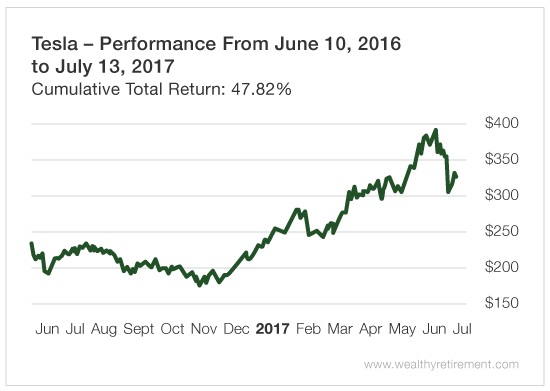When I lived in New York City, I rode the subway nearly every day.
In the beginning, I followed the hordes of other commuters on the platform… I pushed my way onto an already too crowded train with everybody else.
But after a few months, I learned an important lesson.
There’s always another train coming down the tracks. And if I waited just a short time for it, I’d be ensured a comfortable ride. And I’d still get to my destination on time.
I’ve found that the same thing is true when you’re buying stocks.
Except plowing into a crowded stock isn’t just an uncomfortable ride… It can also cost you.
Overpaying for investments can shave hundreds, thousands or more off of your returns. And in the worst cases, it can significantly delay your retirement.
The good news is that there is an easy way to avoid this costly mistake. All you have to do is use a limit order… and stick to it!
Tricks of the Trade
Much like navigating the New York City subway, you always need to have a plan and a lot of patience when it comes to investing.
Before you buy a stock, decide how much you are willing to pay for it. Then enter a limit order to buy shares for that price or less.
If the stock starts to run, don’t chase it.
More often than not, after the crowd of investors packs into the trade, the stock price will trade back down to your limit order price.
By waiting to buy the stock, you’ll actually reach your financial goals quicker than those who pushed their way into the trade. Sometimes a stock receives a lot of attention, and investors buy willy-nilly. They ignore all fundamentals or valuations because they just want to get in. And they superficially drive up the price of the stock.
I see it happen every day when a hedge fund manager goes on TV pitching shares of his top holding or when a big investment firm upgrades a stock.
FOMO or Stupid?
The kids call it FOMO – the fear of missing out. But when it comes to trading, I call it stupid.
That’s because when the frenzy ends after a few minutes, hours or days, the stock almost always trades back down. And all of those investors who bought on the way up are already in the hole on their investments.
High-flying electric car company Tesla Inc. (Nasdaq: TSLA) is a great example of how much money “crowd trading” can cost you. CEO Elon Musk hosted the company’s annual shareholder’s meeting on May 31, 2016. On June 1, 2016, the company’s stock was trading below $220.
Investors liked what they heard. And a number of Wall Street analysts upgraded Tesla and raised their price targets for the stock. Investors grabbed up shares, which took off and made higher highs on June 6, 7 and 8.
Then a strange thing happened. As the news flow dried up, Tesla’s stock stopped moving up… and began drifting lower. By June 10, Tesla’s stock price was right back to where it started.
And while Tesla’s stock has continued to move higher over the last 13 months, patient investors are more than $1,000 richer. That’s assuming a $10,000 investment on June 10 versus a $10,000 investment on June 8.



That’s one reason Chief Income Strategist Marc Lichtenfeld uses limit orders when recommending stocks to subscribers of his trading services Lightning Trend Trader and Tactical Trader Alert.
When it comes to investing, a little extra money can go a very long way. And overpaying for a stock, just like paying fees or taxes that are too high, will take a big bite out of your gains. Setting limit orders is one more method you can use to help maximize your portfolios profits.
That’s why I rarely use a market order to buy a stock. Sure, occasionally I miss getting in on a trade… stuff happens. But, like a subway train, there’s always another one coming along behind it.
So pick a buy price, and stick with it. If you don’t get the price you want, it’s no big deal. There is always the next stock. Better to miss out than lose money by shrinking your returns.
Good investing,
Kristin
[ad#agora]
Source: Wealthy Retirement

